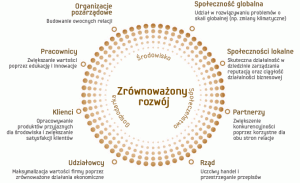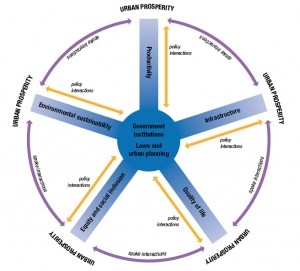Just about every major corporation today understands the importance of running a sustainable business. Generally speaking, this means one in which water gets conserved, energy and materials come increasingly from clean sources, and the social impact of the business is positive. The trouble is, until now there have been few ways to measure not only how brands are performing environmentally but also how the public perceives that performance. And how the public perceives a company’s greenness is becoming increasingly important. “More and more companies are looking at social purpose and corporate citizenship as part of their core offering,” says Jez Frampton, the Global CEO of Interbrand, an international brand consultancy. “Why? It helps drive purchases.”
That’s especially true of the millennial generation. In general, they prefer to buy from companies who share their worldview—especially when it comes to the environment. In the decade ahead, those companies that invest in initiatives that help people and the planet as well as their bottom line and who can communicate those efforts effectively will have a competitive edge.
Deloitte, which measured the brands for the seriousness and effectiveness of their environmental efforts, found that the leaders on the list have made sustainability mainstream. Says Will Sarni, a consultant at Deloitte: “This is the year of the supply chain. The companies that made the list are moving beyond greenhouse gas emissions in the supply chain to focus on waste and water use up and down the value chain.”
After Deloitte measured effectiveness, Interbrand then checked to see whether the public actually knew about all this hard work. It surveyed 10,000 people in countries with the ten largest GDPs to measure the perceived greenness of each brand.
The surprise on this year’s list was that Ford replaced Toyota as the No. 1 brand. Ford’s philosophy is that sustainability issues should be integrated into the business. The automaker now offers seven electrified models. Six are hybrids. The seventh, the Focus Electric, is a pure battery electric car.
The two brands that jumped the most this year were IKEA (No. 19) and Zara (No. 34), each rising 14 places from last year. The Swedish home furnishings chain announced that it would be teaming up with Nissan (No. 5) and energy provider Ecotricity to install electric car charging stations for customers at all U.K. stores. IKEA is one of the first major retailers to offer electric charging points –a proactive strategy to help meet the growing demand from their customers. Spanish retailer Zara is committed to implementing sustainable practices across it operations, from introducing a waste management policy across its flagships, using organic cotton and ecological fabrics, and educating staff on sustainable practices, such as limiting energy consumption. By 2020, all its existing stores around the world aim to be 100 percent eco-efficient.
The Best Global Green Brands list also posts a score for each brand that represents the gap between its overall performance score and its overall perception score. A positive score indicates a brand is doing more than it is given credit for, while a negative score indicates that a brand is being given more credit than its actions merit. More information on the methodology can be found here.
Panasonic, for example, had a high positive gap score. In other words, the brand is doing a lot of impressive work to become more sustainable but isn’t getting credit for it from the public. Apple has a negative gap score. While the company is doing more to improve its environmental performance, consumers believe that Apple is greener than it actually is. “In a world of social media,” says Interbrand’s Frampton, “this can be extremely dangerous because you’ll be found out.” (source: Fortune)
This material has been published thanks to the financial support of the National Fund for Environmental Protection and Water Management. The sole responsibility for its contents lies with Collegium Mazovia.







Leave a Reply
You must be logged in to post a comment.